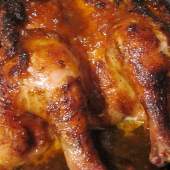Fall Flavors – Maple

“Maples are such sociable trees. They’re always rustling and whispering to you.”
--Lucy Maud Montgomery, Anne of Green Gables
“The sugar maple is remarkable for its clean ankle.”
--Henry David Thoreau
“The maple wears a gayer scarf, the field a scarlet gown. Lest I should be old-fashioned, I'll put a trinket on.
--Emily Dickinson
Fall is in the air! As the increasingly cooler temperatures make you reach for a sweater and dusk descends earlier each day, our collective craving for fall flavors returns and intensifies. You know autumn is officially on its way when all things pumpkin spice start popping up everywhere, but there are other flavors we associate with the season – for instance, maple.
The familiar maple flavoring in our foods, as you probably know, is made from sap drawn from several varieties of maple trees, including red, black, and sugar, among others. These trees are native to North America, and the origins of the practice, and when it began, are murky. It is believed to have started with indigenous people living in the American northeast. We do know that French explorers in the region noted the existence of sugar maple trees as early as the mid-1500s, and it is surmised that the first use of maple sugar as a consumable occurred long before that.
There are a number of theories about who discovered maple sugar, and how it happened. According to the Massachusetts Maple Producers Association, “one Iroquois legend tells how Chief Woksis had thrown his tomahawk into a maple tree one late winter evening. After he removed it the following morning, the weather turned sunny and warm. Sap began to flow from the cut in the tree, and drip down into a container at the base of the tree.” Presumably after someone sampled it, the sap was subsequently used in place of water “to boil the meat for dinner. As the liquid in the sap boiled away, a wonderful, sweet maple taste was left with the meat.” There are also tales of “sapsicles” – “the icicles of frozen maple sap that form from the end of a broken twig in winter time. As the ice forms, some of the water evaporates, leaving a sweet treat hanging from the tree.” (Doesn’t that sound good?)
In any event, by the time Pilgrims alighted from the Mayflower onto Plymouth Rock in 1620, a process for harvesting, processing, and preserving maple sugar had been well established by Native Americans. They generously passed along that knowledge, and it was ex-Europeans who may have come up with the idea of drilling a hole in a tree and installing a tap or “spile” to get at the sap. This method was deemed to be the most efficacious way to access the sap while keeping the tree healthy (prior to that, the bark would be slashed instead). Subsequently, a whole economy cropped up around the production of maple sugar, which was not only consumed but also sold and traded for other goods. Later, our “epicurean” president, Thomas Jefferson, became such a fan of homegrown maple sugar that he established an orchard of sugar maples at Monticello.
How was sap from the sugar maple tree transformed into the maple syrup that we enjoy today? It was a challenge, because after the sap was boiled to produce maple sugar, it would quickly dry and harden; this was great for preserving it but not so good for liquefying it or storing the syrup made from it afterward. Again, per the Massachusetts Maple Producers Association, “By the late 1800s a Vermont man built what he called a maple sugar ‘evaporator.’ This especially designed flat pan had channels for the sap to flow through as it boiled. In this way fresh sap could always be added to one end of the evaporator, and finished syrup could be drawn off at the other end. Today pure maple syrup is still made in an evaporator with much the same design.”
Maple syrup production in the U.S. continues to thrive, despite some challenges presented by climate change, including in Illinois.
A few fun facts about maple:
- As you might expect, the state of Vermont is America’s biggest maple syrup producer, responsible for more than 5 percent of the world’s supply. Quebec, Canada easily takes the prize as global leader, with three-quarters of the market covered by their output.
- To make one gallon of maple syrup, which weighs in at 11 pounds, it takes between 30 and 50 gallons of sap.
- Sap can also be extracted (and syrup made) from trees other than maple, including palm, birch, and walnut.
- Native Americans also used maple tree sap to make such items as soap, medicines, and dyes.
- The harvesting of maple sugar requires patience – generally, a tree should measure 12 inches in diameter and at least 30 years of age before it can be tapped for sap. Most maple trees, once they reach optimum maturity, can tapped for well over a century – the gift that keeps on giving!
- Maple syrup harvesting season generally takes place each year in early spring, and can last as long as 10 weeks.
- The maple tree is the official state tree of New York, Rhode Island, Vermont (of course), West Virginia, and Wisconsin.
- National Maple Syrup Day falls on December 17. Mark your calendars.
Of course, while maple syrup is by far the most popular product centered around this flavor, there are other foods and recipes that make use of maple sugar beyond its use on pancakes and waffles, including beverages (beer, liqueur, cocktails, milkshakes, coffee), butter spreads, desserts, cookies, cakes, breads, donuts (where maple flavoring is often paired – deliciously! – with bacon), and meat and vegetable sauces and glazes.
It can be sad to bid farewell to the joys of summer, but fall flavors like maple certainly make it easier!





